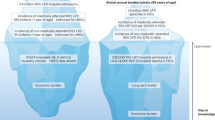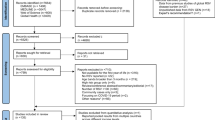Abstract
Background
Longitudinal respiratory syncytial virus (RSV) dynamics have not been well studied despite the existence of factors favoring prolonged RSV replication including high mutation rates allowing rapid evolution and potential escape from immune control. We therefore measured viral load in previously RSV-naive infants over prolonged time spans.
Methods
During 2014–2015, quantitative nasal aspirates were collected from 51 RSV-PCR+ infants. Multiple parallel assessments of viral loads were quantified at each collected time point using a well-validated real-time quantitative reverse transcriptase polymerase chain reaction assay. After observing viral load rebound phenomenon in some infants, the viral dynamics of 27 infants with sufficient longitudinal viral load data points were analyzed using the pre-defined criteria for viral rebound. Additional analyses were performed comparing age with viral rebound, viral clearance rates, and viral load area-under-the-curve (AUCVL).
Results
The 51 infants (303 nasal aspirate samples; mean of 5.9 per patient) exhibited slower than expected viral clearance. Lower age trended toward slower viral clearance and greater AUCVL. Six infants had detectable viral loads ≥1 month after symptom onset. Ten of twenty-seven evaluable subjects exhibited viral rebound and this rebound was age-dependent (P=0.0259). All but one rebounder were <70 days old.
Conclusion
Infants struggle to control primary RSV infections allowing prolonged viral replication and previously undescribed viral rebound; likely representing viral mutational immune escape.
Similar content being viewed by others
Log in or create a free account to read this content
Gain free access to this article, as well as selected content from this journal and more on nature.com
or
References
Simões EA, Devincenzo JP, Boeckh M et al. Challenges and opportunities in developing respiratory syncytial virus therapeutics. J Infect Dis 2015;211 (Suppl 1): S1–S20.
Boyce TG, Mellen BG, Mitchel EF Jr, Wright PF, Griffin MR . Rates of hospitalization for respiratory syncytial virus infection among children in medicaid. J Pediatr 2000;137:865–870.
Buckingham SC, Bush AJ, Devincenzo JP . Nasal quantity of respiratory syncytical virus correlates with disease severity in hospitalized infants. Pediatr Infect Dis J 2000;19:113–117.
Devincenzo JP, El Saleeby CM, Bush AJ . Respiratory syncytial virus load predicts disease severity in previously healthy infants. J Infect Dis 2005;191:1861–1868.
Devincenzo JP, Wilkinson T, Vaishnaw A et al. Viral load drives disease in humans experimentally infected with respiratory syncytial virus. Am J Respir Crit Care Med 2010;182:1305–1314.
El Saleeby CM, Bush AJ, Harrison LM, Aitken JA, Devincenzo JP . Respiratory syncytial virus load, viral dynamics, and disease severity in previously healthy naturally infected children. J Infect Dis 2011;204:996–1002.
Hall CB, Douglas RG, Geiman JM . Respiratory syncytial virus infections in infants: quantitation and duration of shedding. J Pediatr 1976;89:11–15.
Ginocchio CC . Strengths and weaknesses of FDA-approved/cleared diagnostic devices for the molecular detection of respiratory pathogens. Clin Infect Dis 2011;52 (Suppl 4): S312–S325.
Bagga B, Cehelsky JE, Vaishnaw A et al. Effect of preexisting serum and mucosal antibody on experimental respiratory syncytial virus (RSV) challenge and infection of adults. J Infect Dis 2015;212:1719–1725.
Devincenzo JP, Mcclure MW, Symons JA et al. Activity of oral ALS-008176 in a Respiratory Syncytial Virus Challenge Study. N Engl J Med 2015;373:2048–2058.
Perkins SM, Webb DL, Torrance SA et al. Comparison of a real-time reverse transcriptase PCR assay and a culture technique for quantitative assessment of viral load in children naturally infected with respiratory syncytial virus. J Clin Microbiol 2005;43:2356–2362.
Lagos R, Devincenzo JP, Muñoz A et al. Safety and antiviral activity of motavizumab, a respiratory syncytial virus (RSV)-specific humanized monoclonal antibody, when administered to RSV-infected children. Pediatr Infect Dis J 2009;28:835–837.
Collins PL, Graham BS . Viral and host factors in human respiratory syncytial virus pathogenesis. J Virol 2008;82:2040–2055.
Bisgaard H, Flores-Nunez A, Goh A et al. Study of montelukast for the treatment of respiratory symptoms of post-respiratory syncytial virus bronchiolitis in children. Am J Respir Crit Care Med 2008;178:854–860.
Eiland LS . Respiratory syncytial virus: diagnosis, treatment and prevention. J Pediatr Pharmacol Ther 2009;14:75–85.
Thomas PG, Keating R, Hulse-Post DJ, Doherty PC . Cell-mediated protection in influenza infection. Emerg Infect Dis 2006;12:48–54.
Pickles RJ, Devincenzo JP . Respiratory syncytial virus (RSV) and its propensity for causing bronchiolitis. J Pathol 2015;235:266–276.
Grad YH, Newman R, Zody M et al. Within-host whole-genome deep sequencing and diversity analysis of human respiratory syncytial virus infection reveals dynamics of genomic diversity in the absence and presence of immune pressure. J Virol 2014;88:7286–7293.
Kim-Hoehamer Y-I, Lau J, Murphy R et al. Deep-sequencing of longitudinal samples from RSV-infected adults and infants reveals heterogeneous dynamics of within-host viral diversification. J Immunol 2016;196(Suppl 1):80.8.
Feldman AS, He Y, Moore ML, Hershenson MB, Hartert TV . Toward primary prevention of asthma. Reviewing the evidence for early-life respiratory viral infections as modifiable risk factors to prevent childhood asthma. Am J Respir Crit Care Med 2015;191:34–44.
Acknowledgements
We thank the parents and caregivers of the participating infants for their altruism. Without whom, we could not make advancements toward a better understanding of RSV infections, their treatment, and prevention. Dr. DeVincenzo and Dr. Cormier also thank the Department of Pediatrics at University of Tennessee Health Science Center, the Department of Microbiology, Immunology, and Biochemistry at University of Tennessee Health Science Center, Children's Foundation Research Institute and Le Bonheur Children's Hospital for the opportunity to conduct our research and expand the knowledge of RSV infections in the pediatric population.
Statement of financial support
This work was supported by internal funds (Grant number: RO73230070) from the DeVincenzo laboratory and University of Tennessee Health Science Center; no external financial support was received for this study. J.H. was supported by a University of Tennessee Health Science Center College of Medicine-sponsored Medical Students Research Fellowship funded by the University of Tennessee Department of Pediatrics and the LeBonheur Children’s Hospital.
Author information
Authors and Affiliations
Corresponding author
Ethics declarations
Competing interests
The authors declare no conflict of interest.
Rights and permissions
About this article
Cite this article
Brint, M., Hughes, J., Shah, A. et al. Prolonged viral replication and longitudinal viral dynamic differences among respiratory syncytial virus infected infants. Pediatr Res 82, 872–880 (2017). https://doi.org/10.1038/pr.2017.173
Received:
Accepted:
Published:
Issue date:
DOI: https://doi.org/10.1038/pr.2017.173
This article is cited by
-
Respiratory syncytial virus: viral load, viral decay, and disease progression in children with bronchiolitis
Brazilian Journal of Microbiology (2022)



